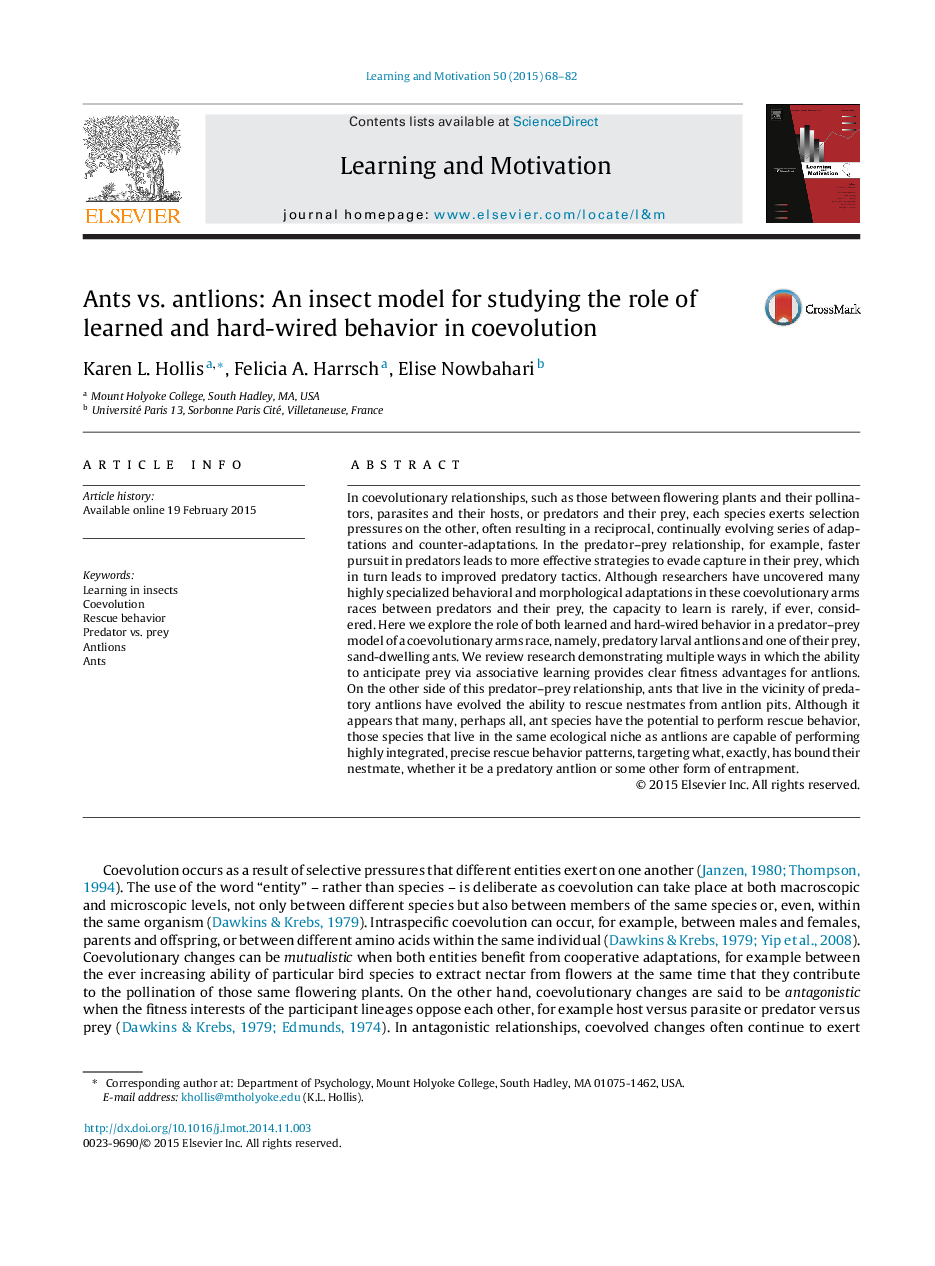| کد مقاله | کد نشریه | سال انتشار | مقاله انگلیسی | نسخه تمام متن |
|---|---|---|---|---|
| 918916 | 1473518 | 2015 | 15 صفحه PDF | دانلود رایگان |

In coevolutionary relationships, such as those between flowering plants and their pollinators, parasites and their hosts, or predators and their prey, each species exerts selection pressures on the other, often resulting in a reciprocal, continually evolving series of adaptations and counter-adaptations. In the predator–prey relationship, for example, faster pursuit in predators leads to more effective strategies to evade capture in their prey, which in turn leads to improved predatory tactics. Although researchers have uncovered many highly specialized behavioral and morphological adaptations in these coevolutionary arms races between predators and their prey, the capacity to learn is rarely, if ever, considered. Here we explore the role of both learned and hard-wired behavior in a predator–prey model of a coevolutionary arms race, namely, predatory larval antlions and one of their prey, sand-dwelling ants. We review research demonstrating multiple ways in which the ability to anticipate prey via associative learning provides clear fitness advantages for antlions. On the other side of this predator–prey relationship, ants that live in the vicinity of predatory antlions have evolved the ability to rescue nestmates from antlion pits. Although it appears that many, perhaps all, ant species have the potential to perform rescue behavior, those species that live in the same ecological niche as antlions are capable of performing highly integrated, precise rescue behavior patterns, targeting what, exactly, has bound their nestmate, whether it be a predatory antlion or some other form of entrapment.
Journal: Learning and Motivation - Volume 50, May 2015, Pages 68–82